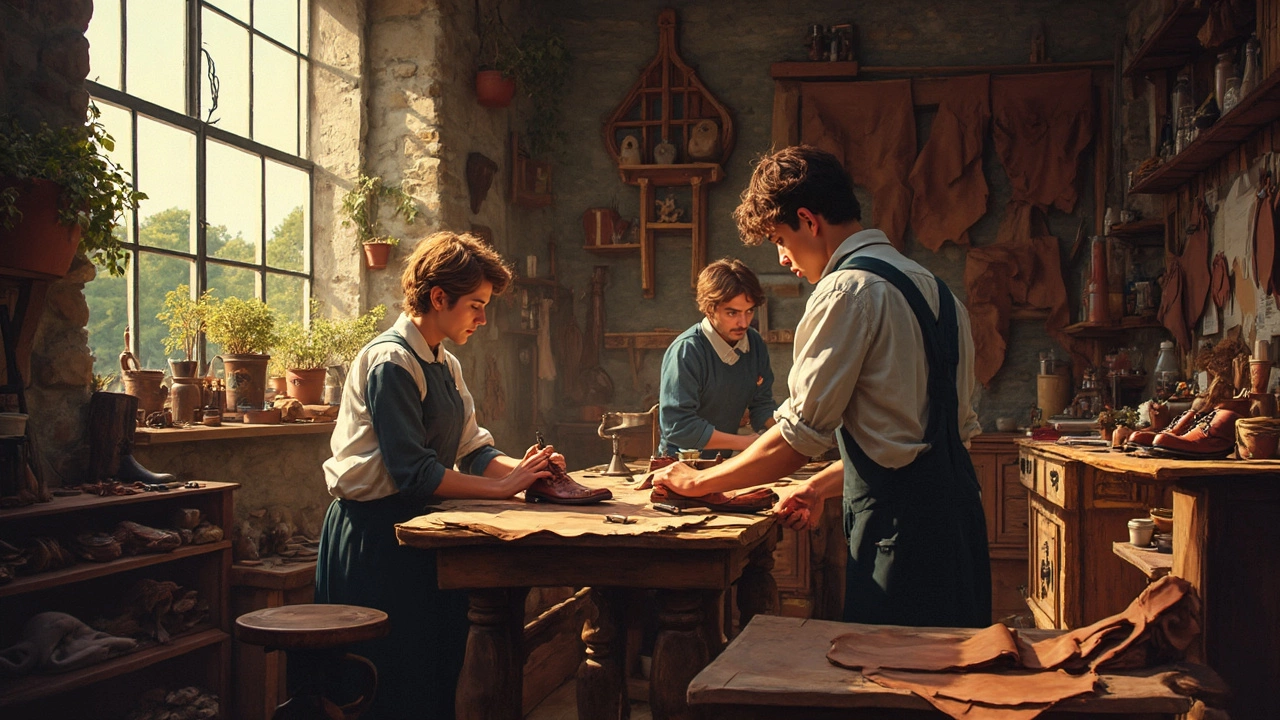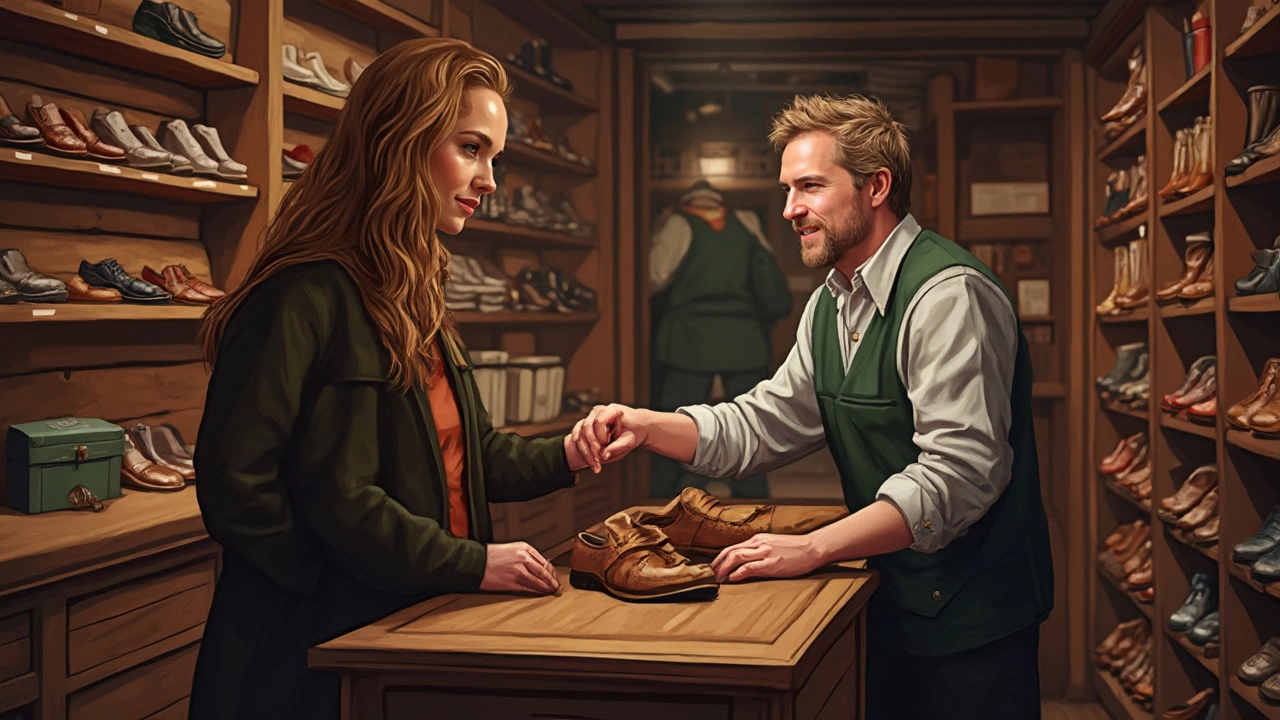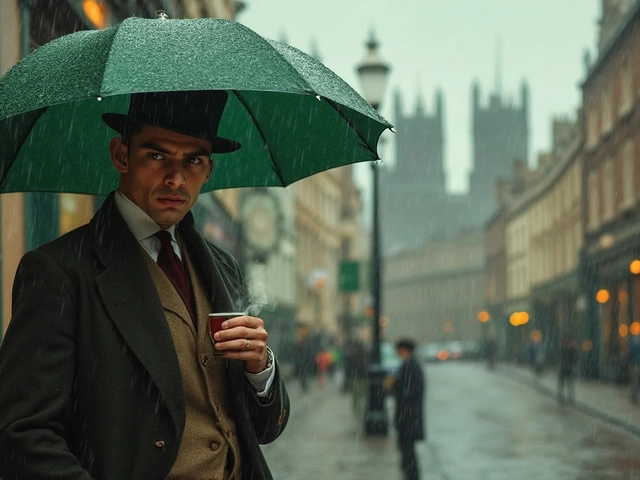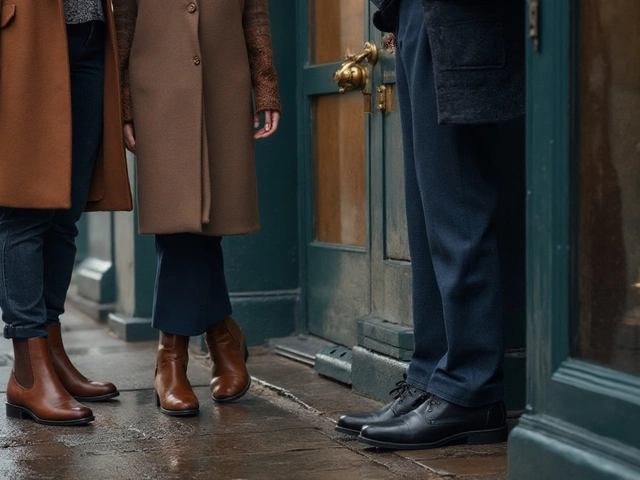So, you're on the hunt for some new kicks in Ireland, and you want to make sure they're made of genuine leather. Smart move! Real leather has this natural charm and durability that's hard to beat. Plus, let's face it, no one wants to splash out on fake stuff, right?
First off, understanding what real leather entails is pretty essential. Unlike synthetic materials, real leather has a distinct smell, look, and feel. It's got this earthy scent that's quite different from the plasticky smell of faux leather. In places like Dublin or Cork, where the weather can get a bit damp, real leather holds up and even gets better with age.
Want to get hands-on? Try the water test. A tiny drop of water on real leather should be quickly absorbed, darkening the spot. Don't worry; it dries out. But with fake leather, water often sits on top, refusing to budge. Handy test, right?
Keen on supporting local? Ireland has some stellar brands crafting quality leather footwear. Have a look at Dubarry or O'Donnell shoes, known for their craftsmanship. They often work with real leather, so chances are you'll be in safe hands.
- Understanding Real Leather
- The Smell Test
- Texture and Appearance
- The Water Test
- Local Leather Brands
- Buying Tips for Irish Consumers
Understanding Real Leather
When it comes to figuring out if shoes are made of real leather, it's all about the details. Leather is basically treated animal hide, typically from cows, and has been a trusty material in shoe-making for ages. But how do you know you're not being duped? Let's break it down.
Sourcing and Types
Real leather can come from different animals, but cowhide is the most common due to its strength and availability. Other types like lamb or goat leather are softer and more suited to items like jackets and handbags.
Characteristics of Real Leather
Genuine leather is breathable, meaning it doesn't trap moisture like fake materials do. This is great for Irish weather, where shoes can take a bit of a beating from the rain. You should notice an irregular texture with subtle creases and a grain pattern that's not 100% uniform; that's because it's natural and not stamped out by a machine.
Unique Markings
- Natural Smell: There's a warm, earthy smell to real leather, quite different from the chemical whiff of synthetics.
- Flexible and Durable: It will flex and soften over time, molding to your foot better than any fake material.
- Pattern Variations: Look for different grains or small scars, evidence of the animal's life.
Fun Fact
Did you know that Ireland imports a significant amount of leather products from Italy? It's one of the best places to get high-quality materials, but local cobblers like those in Galway pride themselves on using Irish-sourced leather for authentic craftsmanship.
Remember, buying leather shoes is an investment. While they might seem pricy upfront compared to synthetic options, their durability and timeless style can end up saving you money in the long run!
The Smell Test
Alright, here's a simple method to check for real leather: give it a sniff! Sounds weird? Maybe. But trust me, it's surprisingly effective. Real leather shoes have a distinct smell that synthetic materials just can't replicate.
When you're out shopping, especially in some of Ireland's bustling markets or local stores around Dublin, give those shoes a gentle sniff. Real leather has a natural, earthy smell—kind of like a mix of freshly tanned hide with a hint of musk. It's quite different from the chemical-like odor you get off synthetic or faux leather.
Why does it matter? Well, scent differences generally come from the way materials are processed. Genuine leather goes through a tanning process that maintains these natural oils and proteins, while synthetic versions often contain plastic or rubber substances that have a distinctly artificial aroma.
For those of you who are new to identifying real leather, here's a quick breakdown:
- Real Leather: Earthy, natural scent; think nature with a bit of character.
- Faux Leather: Smells chemical, almost like plastic or vinyl.
This might come in handy on your next shopping spree in Cork or Limerick. Next time you're eyeing those O'Donnell shoes, give them a whiff to assure they're the real deal!
If you're ever unsure, compare with a known genuine leather item, perhaps something you already own. It’s a subtle yet effective way to confirm authenticity without any high-tech gadgetry or expert skills.
Texture and Appearance
Alright, let's delve into the nitty-gritty of real leather. One of the first things you'll notice about genuine leather is its texture. Unlike the smooth and consistent feel of synthetic leathers, real leather tends to have a more natural, uneven texture. You might spot some grain variations, and that's a good thing. It means it hasn't been overly processed.
Look and Feel
When you're checking out a pair of shoes, give them a good feel. Real leather should feel supple and soft but also firm enough to hold its shape. The leather from Irish produces, like some you might find at local markets in Galway, often features this characteristic. The artisanal approach in these regions results in footwear that's both rustic and charming.
Test the Surface
Try rubbing your hand across the surface. If you notice any minor scratches or marks that can be buffed out easily, that's another hint you're dealing with the real deal. Synthetic materials, on the other hand, tend to be flawless—almost too perfect and uniform, which sets off alarm bells if you're after the real stuff.
Color Changes
Genuine leather develops a unique patina over time; this is a real selling point for leather lovers. The color might deepen or become richer with use—think of it as the shoe's way of aging gracefully. It's why some folks hang onto their leather gear for years; it just keeps looking better.
Here's a quick table showing a basic comparison for clarity:
| Feature | Real Leather | Faux Leather |
|---|---|---|
| Texture | Natural, uneven | Smooth, uniform |
| Flexibility | Supple, soft | Rigid, often stiff |
| Color Change | Develops patina | Remains unchanged |
For those not yet familiar with this whole leather game, these cues can really help. So whether you're trawling through boutiques in the heart of Dublin or exploring quaint shops in Limerick, keep your eyes peeled for these signs. Spend a little extra time on this detail, and your feet—and your wallet—will thank you later.

The Water Test
Alright, let's dive into the nitty-gritty of the water test. This little hack is super handy for figuring out if those shoes you're eyeing are the real deal when it comes to real leather. And remember, this isn't rocket science—it’s something you can totally try at home.
So, what exactly is the water test? It's simple, really. Genuine leather shoes have a unique way of dealing with water. They’re a bit like a sponge because they absorb moisture. This happens due to the natural pores in the leather skin.
Step-by-Step Guide
- Find a discreet area: You don’t want to mess up the aesthetics in case it’s not real leather. Think the shoe's tongue or the side.
- Apply a drop of water: Just a drop will do. You’re looking for a quick absorption here.
- Observe what happens: Real leather darkens as it absorbs the water almost instantly. If the water just sits there, or worse, slides off, you've likely got a synthetic on your hands.
This little test might seem simple, but it's mighty effective. Just make sure not to overdo it—leather doesn’t like getting too wet! And when you're wearing your leather shoes out and about in Ireland, don’t forget that occasional water exposure (like a lovely Irish drizzle!) might just give your shoes a bit of character over time.
Interestingly, in Dublin and Galway's local markets, you’ll find many sellers using this test to guarantee authenticity. But whether you're buying from a street market or a high-end store, knowing this trick gives you an edge for ensuring your investment is solid.
Local Leather Brands
When it comes to buying real leather shoes in Ireland, homegrown brands are a top-notch choice. Not only do they offer superior craftsmanship, but you're also supporting local businesses. Plus, these brands have a reputation built over the years, so you’re less likely to end up with something subpar.
Dubarry
First up is Dubarry. Known predominantly for their sailing boots, Dubarry has expanded its line over the years to include some stunning leather footwear options. They're based in Ballinasloe, County Galway, and take pride in their leather tanning processes. Fans often rave about their Dubarry Galway boots - a perfect pick for those braving Ireland's unpredictable weather.O'Donnell
If you’re near Donegal, check out O'Donnell shoes. Crafting shoes since the 1930s, this family-run business has carved a niche for itself, combining tradition with modern designs. Their shoes are not only stylish but also made to last, using quality leather sourced responsibly.LokaL Leather
For something a bit more contemporary, LokaL Leather is an emerging brand making waves with its eco-friendly approach. Based in Dublin, they ensure all their leather is ethically sourced and keep their designs fresh and trendy. Their commitment to sustainability is a hit, especially among younger buyers.These brands are good starting points if you want to ensure you're investing in authentic leather. Keep an eye out for local festivals and markets where they often showcase their products, giving you a chance to learn more about the craft behind each pair.
Buying Tips for Irish Consumers
Navigating the world of real leather shoes in Ireland can feel like a bit of a challenge, but don't worry—Ireland has plenty of local stores and practices to steer you right. For starters, keeping an eye on well-respected Irish brands like Dubarry and O'Donnell will often lead you to authentic leather options.
Check the Labels
Always take a peek at the labels. Authentic leather shoes should clearly state something like "genuine leather" or "real leather"—a positive indication. Be aware of terms like "man-made materials" which usually mean faux leather.
Shop Local
Visiting traditional shoe shops in cities such as Galway or Waterford allows you to physically inspect the shoes, and staff are often incredibly knowledgeable. Local markets, like the English Market in Cork, sometimes have stalls selling locally crafted leather goods, too.
Price Points and Quality
With leather, you often get what you pay for. A bargain might seem tempting, but very cheap leather shoes usually indicate low quality or synthetic materials. Spend a bit more if you want durability.
Online Shopping
If you're buying online, stick to Irish retailers with solid return policies. Look for customer reviews—happy buyers often sing the praises of their purchases! Websites such as Arnotts or Brown Thomas list detailed product descriptions, helping you make informed decisions.
Status Quo on Leather Purchases
Consider this: a 2024 survey of Irish consumers found that 67% trust local brands for their leather goods over international options.
Care and Maintenance
Once you’ve nabbed your quality shoes, keep 'em spiffy with regular conditioning and avoid excessive water exposure. Proper care extends their life, making that investment well worth it.
So there you have it, exploring the Irish market for authentic leather shoes doesn't have to be daunting. With these buying tips, you're set to make choices that marry quality with local charm.






Write a comment